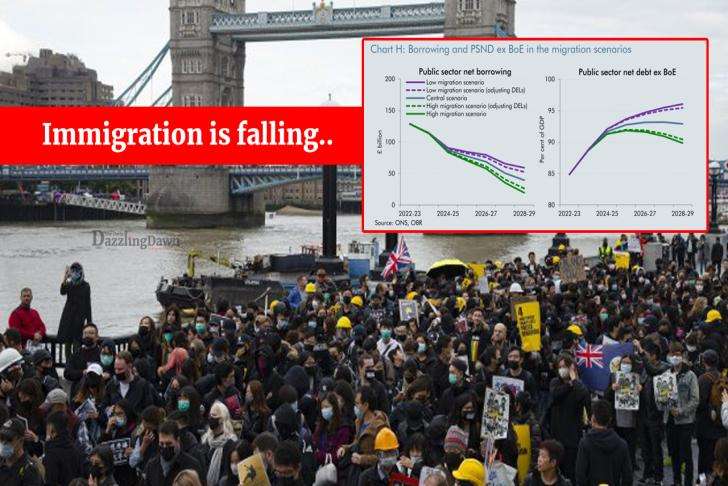Think twice before making wishes. Due to extremely high immigration numbers (almost two million in the last three years), the administration has faced significant electoral challenges for the past eighteen months. However, the figures for today provide more proof that net migration is currently declining significantly. More recent visa data from the Home Office indicates a significantly steeper decline is anticipated, even though it was only slightly lower in 2023—685,000—than in 2022—the high of 764,000. Every year, there are almost 20% fewer new work and study visas issued. Meanwhile, emigration is now on the rise, as I had projected.
This reversal is mostly the automatic outcome of established patterns. The numbers for 2022 were enhanced by the influx of refugees from Hong Kong and the Ukraine. After a lag, the significant rise in student immigration following the pandemic's end is now driving up the number of students departing.
However, it is also driven by the policy changes introduced at the end of last year and early this year, in particular the removal of the right to bring dependents both for international students pursuing Masters’ degrees and for care workers. Applications for student visas are down 12% even before the main peak in applications over the summer, while those for health and care workers have fallen by 75%, likely due not just to the restrictions on dependents but also a more restrictive approach to granting sponsor licenses after some well-publicised cases of abuse and exploitation.
And this decline is probably going to quicken. Certain measures, including raising the earnings barrier for family visas and the income criteria for skilled workers, have only recently gone into effect (in fact, the number of applications for skilled work visas increased in April as applicants attempted to get in before the deadline). The government calculated that the entire package would have decreased the number of visas given by roughly 300,000 if it had been implemented in 2023, but it now looks like the real impact would be substantially greater. In fact, net migration may drop to 150–200,000, below the level that existed shortly before the epidemic, according to Brian Bell, the chair of the Migration Advisory Committee.
Is the administration or, more likely, the victor of the next election, benefiting from this? Though there are a lot of other factors at play, it might help extract some of the political poison from the immigration discussion after the election. However, it will also have an impact on the employment market, the economy, and public finances.
The social care sector, which is already dealing with workforce constraints and years of underfunding, will be most affected in the near future. Only a massive surge of migrant workers—70,000 new hires in the last year alone—has prevented the industry from sinking much more during the past two years. If the fall in visas issued is sustained, and there is not a large infusion of taxpayer funds, prospects are bleak.
Additionally, there will be broader effects on the employment market and economy. Immigration has been the primary driver of job growth and economic growth in the UK since shortly before the epidemic. Over the past five years, there has been a decline in the number of workers born in the UK, but an increase of more than a million in those born outside the EU. In addition to health and social services, skilled labour visa holders have created jobs in the scientific and professional fields, and newcomers entering as dependents or students have filled openings in the lodging and hospitality industries.
With little sign that the post-pandemic increase in inactivity – largely due to sickness and disability – is going to reverse any time soon, it’s far from clear where any future labour force growth in any of these sectors will come from.
This in turn has major implications for the public finances. Back in March, the OBR revised its forecasts for net migration up yet again. The resulting additional tax revenue – £7.5 billion in 2028-29 – more than covered the net cost of the tax cuts announced in the Budget. This repeated the consistent pattern of the past few years, when higher migration has been invaluable in helping the Chancellor’s sums add up (even as he was complaining about it).
But now the ratchet may go into reverse. At the same time, the OBR also observed that a ‘low migration’ scenario would – even after taking account of reduced pressures on public spending – push up borrowing by about £14 billion per year in 2028-29, considerably more than the cost of a 2p cut in National Insurance contributions, and raise the debt to GDP ratio – the government’s key fiscal target – by about 2.5%, or about £75 billion.
So the government may well have succeeded in putting immigration firmly on a downward path. The price, however, is likely to be high, and paid both by taxpayers and those who use public services – that is, all of us.








.svg)

